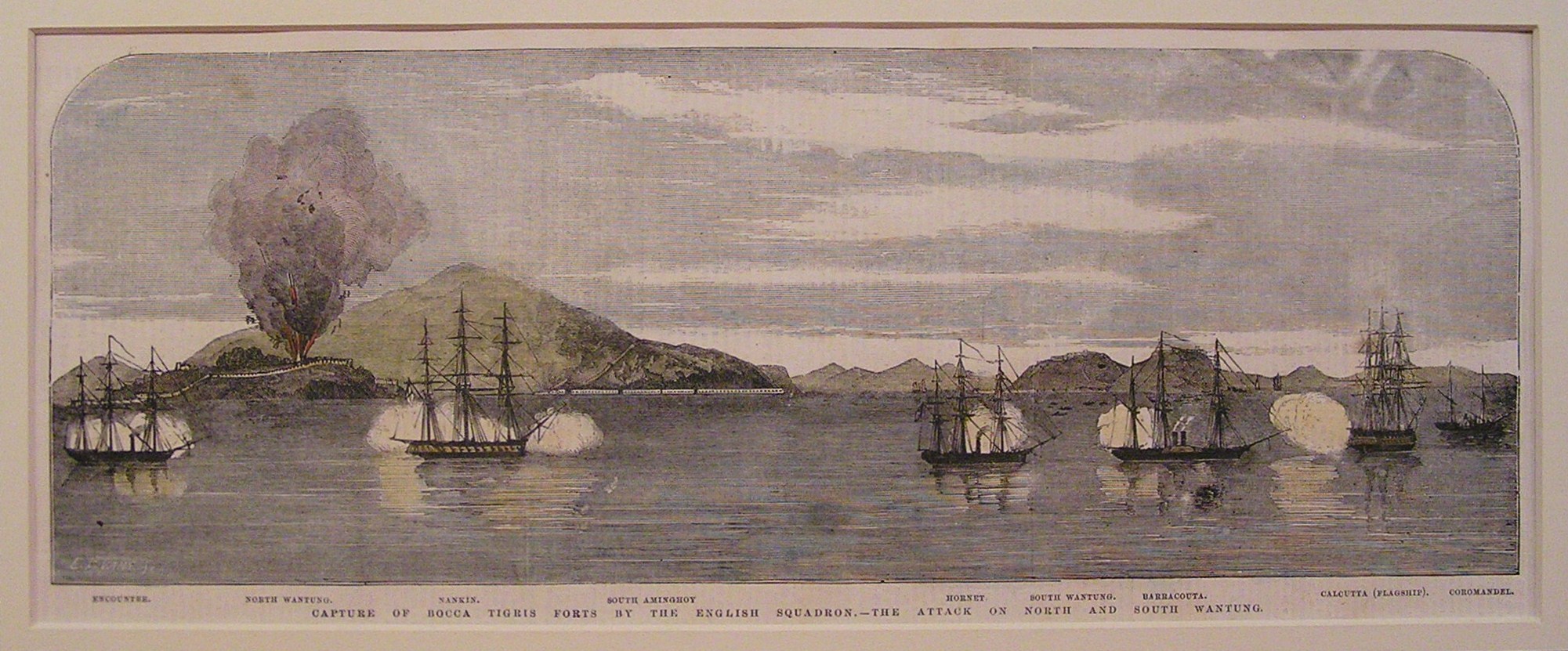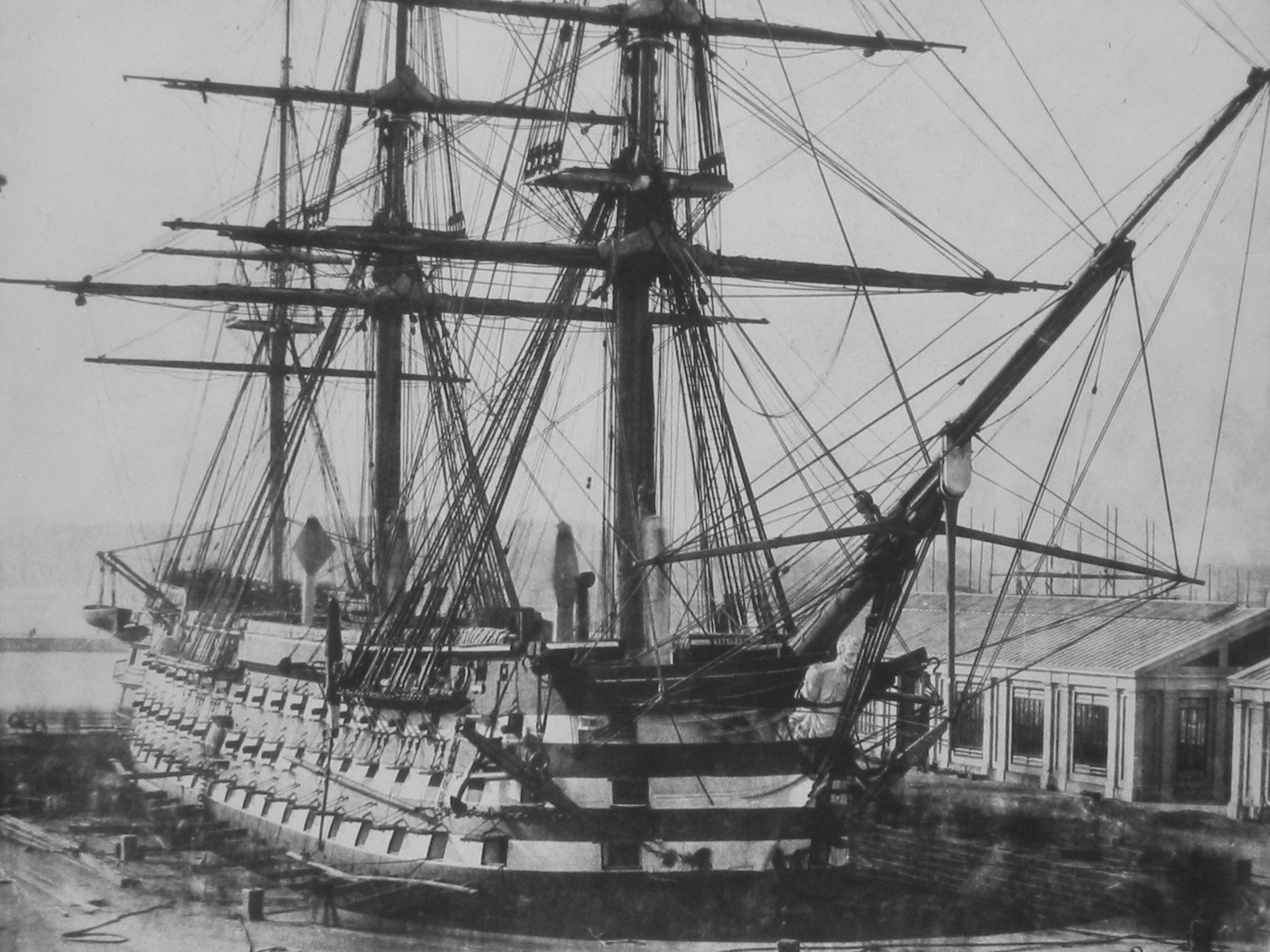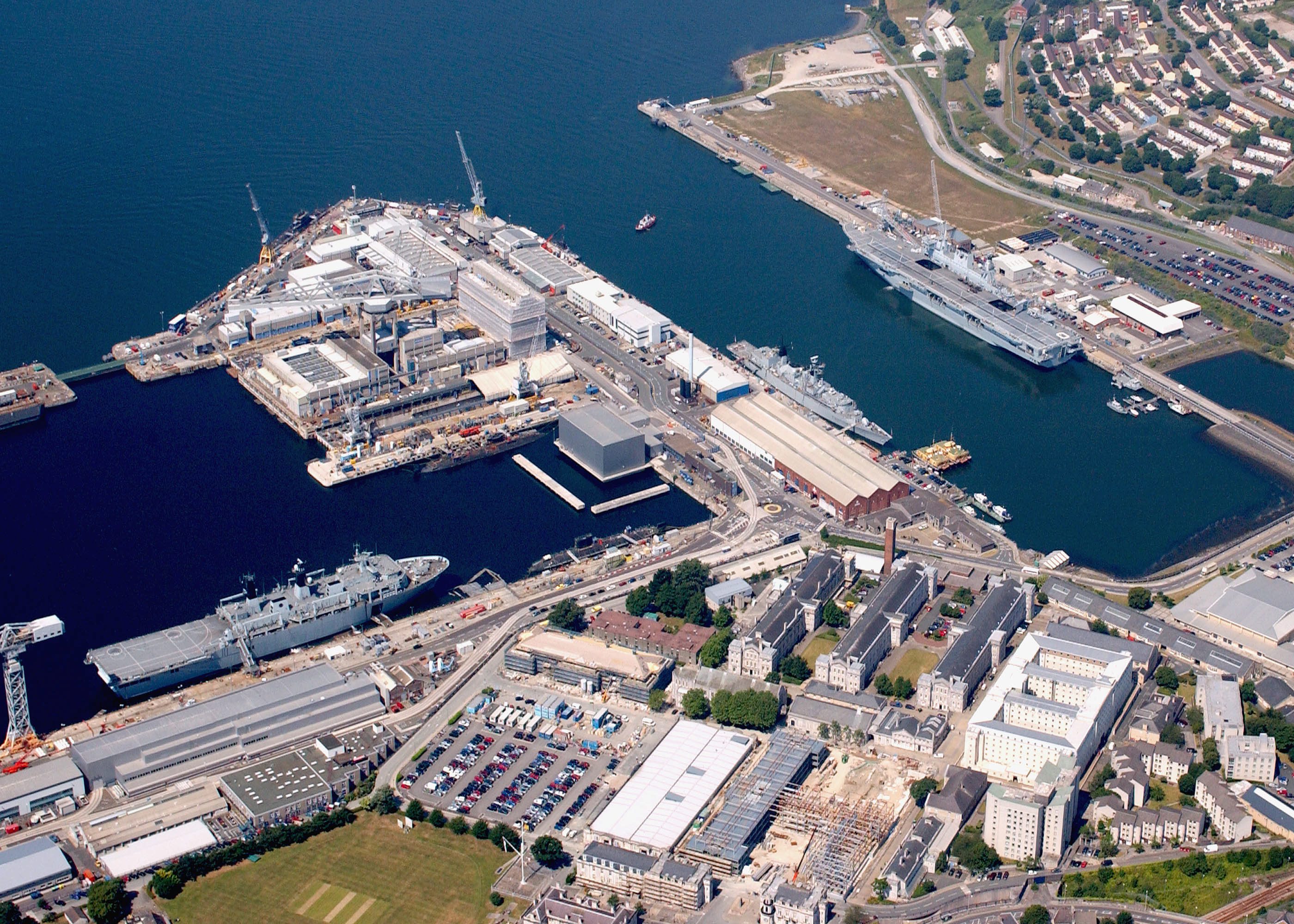|
Michael Seymour (Royal Navy Officer)
Admiral (Royal Navy), Admiral Sir Michael Seymour, Order of the Bath, GCB (3 December 1802 – 23 February 1887) was a Royal Navy officer who went on to be Commander-in-Chief, Portsmouth. Naval career Born the third son of Admiral Sir Michael Seymour, 1st Baronet,Laughton, J. K.. "Seymour, Sir Michael (1802–1887)". ''Oxford Dictionary of National Biography'' (2004 ed.). Oxford University Press. . Michael Seymour entered the Royal Navy in 1813. He was made lieutenant (Royal Navy), lieutenant in 1822, commander (Royal Navy), commander in 1824 and was posted post-captain, captain in 1826. From 1833 to 1835 he was captain of the survey ship HMS Challenger (1826), HMS ''Challenger'', and was wrecked in her off the coast of Chile. In 1841 he was given command of HMS Britannia (1820), HMS ''Britannia'' and then of HMS Powerful (1826), HMS ''Powerful''. In 1845 he took over HMS Vindictive (1813), HMS ''Vindictive''. From 1851 to 1854 he was Commodore Superintendent of HMNB Devonport ... [...More Info...] [...Related Items...] OR: [Wikipedia] [Google] [Baidu] |
Sir Michael Seymour, 1st Baronet
Rear admiral (Royal Navy), Rear-Admiral Sir Michael Seymour, 1st Baronet Order of the Bath, KCB (8 November 1768 – 9 July 1834) was an officer of the Royal Navy. He served during the French Revolutionary Wars, French Revolutionary and the Napoleonic Wars, eventually rising to the rank of rear-admiral. Family and early life Seymour was born in Pallas, County Limerick on 8 November 1768, the second son of Reverend John Seymour and his wife Griselda. He joined the navy at the age of 12, serving as a midshipman aboard the sloop-of-war , in the English Channel, under Captain James Luttrell. Seymour moved with Luttrell to in 1781. The ''Portland'' was then serving as the flagship of Rear-Admiral Richard Edwards (c.1715–1795), Richard Edwards, then the commander-in-chief at Newfoundland and Labrador, Newfoundland. Edwards was replaced by Vice-Admiral John Campbell (Royal Navy officer), John Campbell in 1782, and both Luttrell and Seymour moved aboard . The ''Mediator'' then ... [...More Info...] [...Related Items...] OR: [Wikipedia] [Google] [Baidu] |
Commander (Royal Navy)
Commander (Cdr) is a senior officer rank of the Royal Navy of the United Kingdom. It is immediately junior to captain and immediately senior to the rank of lieutenant commander. Officers holding the junior rank of lieutenant commander are not considered to be commanders. History The title (originally 'master and commander') originated in around 1670 to describe Royal Navy officers who captained ships too large to be commanded by a lieutenant, but too small to warrant the assignment of a post-captain, or before 1770 a master who was in charge of a ship's navigation. These ships were usually sloops-of-war, bomb vessels, fireships, hospital ships and storeships. The commanding officer of this type of ship was responsible for both sailing and fighting the ship and was thus its 'master and commander'. Before 1750, the rank was broadly considered as the limit of advancement for those without patronage, especially those who had been promoted from among a ship's crew. By contr ... [...More Info...] [...Related Items...] OR: [Wikipedia] [Google] [Baidu] |
Battle Of Taku Forts (1858)
The First Battle of Taku Forts () was the first attack of the Anglo-French alliance against the Taku Forts along the Hai River in Tianjin, China, on 20 May 1858, during the Second Opium War. The British and French sent a squadron of gunboats, under Rear-Admiral Admiral Michael Seymour, to attack China's Taku Forts. The battle ended as an allied success. However, the first phase of the Second Opium War would end with the Treaties of Tianjin and the forts were returned to the hands of the Qing Army, leading to the Second Battle of Taku Forts in 1859. Background After the beginning of the Second Opium War, the Anglo-French alliance captured the significant harbor of Canton (Guangzhou) during the Battle of Canton in 1857. The Xianfeng Emperor received the news that Canton had been occupied on 27 January 1858. The British commander Michael Seymour, hoping to force a settlement (the later Treaty of Tianjin), ordered an attack on the Taku Forts as they were the closer path ... [...More Info...] [...Related Items...] OR: [Wikipedia] [Google] [Baidu] |
Battle Of Canton (1857)
The Battle of Canton () was fought by British and French forces against Qing China on 28–31 December 1857 during the Second Opium War. The British High Commissioner, Lord Elgin, was keen to take the city of Canton (Guangzhou) as a demonstration of power and to capture Chinese official Ye Mingchen, who had resisted British attempts to implement the 1842 Treaty of Nanking. Elgin ordered an Anglo-French force to take the town and an assault began on 28 December. Allied forces took control of the city walls on 29 December but delayed entry into the city itself until 5 January. They subsequently captured Ye and some reports state they burnt down much of the town. The ease with which the allies won the battle was one of the reasons for the signing of the Treaty of Tientsin in 1858. Prelude The British had been permitted access to Canton (Guangzhou) at the end of the First Opium War under the terms of the 1842 Treaty of Nanking, but were being illegally barred from entry by its vi ... [...More Info...] [...Related Items...] OR: [Wikipedia] [Google] [Baidu] |
Battle Of Fatshan Creek
A battle is an occurrence of combat in warfare between opposing military units of any number or size. A war usually consists of multiple battles. In general, a battle is a military engagement that is well defined in duration, area, and force commitment. An engagement with only limited commitment between the forces and without decisive results is sometimes called a skirmish. The word "battle" can also be used infrequently to refer to an entire operational campaign, although this usage greatly diverges from its conventional or customary meaning. Generally, the word "battle" is used for such campaigns if referring to a protracted combat encounter in which either one or both of the combatants had the same methods, resources, and strategic objectives throughout the encounter. Some prominent examples of this would be the Battle of the Atlantic, Battle of Britain, and the Battle of France, all in World War II. Wars and military campaigns are guided by military strategy, whereas batt ... [...More Info...] [...Related Items...] OR: [Wikipedia] [Google] [Baidu] |
Battle Of The Bogue (1856)
The Battle of the Bogue was fought between British and Chinese forces at the Humen strait (Bogue), Guangdong province, China, on 12–13 November 1856 during the Second Opium War The Second Opium War (), also known as the Second Anglo-Chinese War or ''Arrow'' War, was fought between the United Kingdom, France, Russia, and the United States against the Qing dynasty of China between 1856 and 1860. It was the second major .... The British captured the forts in the Wangtong Islands on 12 November and the forts in Anunghoy Island the next day. Background Before the battle, Rear-Admiral Michael Seymour, commander-in-chief of British forces, sent a summons to the Chinese commander of the Bogue forts: The British Admiral wishes to spare life, and is not at war with the Chinese; and as it is necessary for him to hold possession of the Bogue Forts, until the conduct of the Viceroy Yeh can be referred to the Emperor of Pekin, one hour will be given for the purpose of clearing ... [...More Info...] [...Related Items...] OR: [Wikipedia] [Google] [Baidu] |
HMS Calcutta (1831)
HMS ''Calcutta'' was an 84-gun second-rate ship-of-the-line of the Royal Navy, built in teak to a draught by Sir Robert Seppings and launched on 14 March 1831 in Bombay. She was the only ship ever built to her draught. She carried her complement of smooth-bore, muzzle-loading guns on two gundecks. Her complement was 720 men (38 officers, 69 petty officers, 403 seamen, 60 boys and 150 marines).Diaries of William King-Hall . Retrieved 6 November 2008. History In 1855 the ship had been in reserve, but was recommissioned due to the and sailed for the Baltic. After two months she was sent home again, as being useless for modern naval actions.[...More Info...] [...Related Items...] OR: [Wikipedia] [Google] [Baidu] |
East Indies And China Station
The Commander-in-Chief, East Indies and China was a formation of the Royal Navy from 1831 to 1865. Its naval area of responsibility was the Indian Ocean and the coasts of China and its navigable rivers. The Commander-in-Chief was appointed in 1831; the appointment ceased to exist when it was separated into the East Indies Station and the China Station in 1865. At the age of 67, Charles Austen was advanced to rear-admiral on 9 November 1846, and was appointed commander-in-chief for the East Indies and China on 14 January 1850, hoisting his flag the following day. He commanded the British expedition during the Second Anglo-Burmese War but died of cholera at Prome on 7 October 1852, at the age of 73. On 30 April 1852 Austen had been thanked for his services in Burma by the Governor-General of India, the Marquess of Dalhousie, who subsequently also formally recorded his regret for Austen's death. In December 1852 Fleetwood Pellew returned to active service with his appointm ... [...More Info...] [...Related Items...] OR: [Wikipedia] [Google] [Baidu] |
Richard Saunders Dundas
Vice-Admiral Sir Richard Saunders Dundas, (11 April 1802 – 3 June 1861) was a Royal Navy officer. As a captain, he took part in the capture of the Bogue forts in January 1841, during the First Opium War. He was appointed to the command of the Fleet in the Baltic Sea, in succession to Sir Charles Napier, in February 1855 and led the naval support during the latter stages of the Crimean War, enforcing a strict blockade and carrying out the bombardment of Sveaborg in August 1855. He was appointed First Sea Lord, First Naval Lord in the first Palmerston ministry in November 1857 and then, after stepping down to be Second Naval Lord during the second Derby–Disraeli ministry, he stepped up again to become First Naval Lord in the second Palmerston ministry in June 1859, remaining in office until his death. The prime minister Henry John Temple, 3rd Viscount Palmerston, (Viscount Palmerston) described Dundas as "a most distinguished officer". Early career The son of Robert Dundas, ... [...More Info...] [...Related Items...] OR: [Wikipedia] [Google] [Baidu] |
Baltic Sea
The Baltic Sea is an arm of the Atlantic Ocean that is enclosed by the countries of Denmark, Estonia, Finland, Germany, Latvia, Lithuania, Poland, Russia, Sweden, and the North European Plain, North and Central European Plain regions. It is the world's largest brackish water basin. The sea stretches from 53°N to 66°N latitude and from 10°E to 30°E longitude. It is a Continental shelf#Shelf seas, shelf sea and marginal sea of the Atlantic with limited water exchange between the two, making it an inland sea. The Baltic Sea drains through the Danish straits into the Kattegat by way of the Øresund, Great Belt and Little Belt. It includes the Gulf of Bothnia (divided into the Bothnian Bay and the Bothnian Sea), the Gulf of Finland, the Gulf of Riga and the Bay of Gdańsk. The "Baltic Proper" is bordered on its northern edge, at latitude 60°N, by Åland and the Gulf of Bothnia, on its northeastern edge by the Gulf of Finland, on its eastern edge by the Gulf of Riga, and in the ... [...More Info...] [...Related Items...] OR: [Wikipedia] [Google] [Baidu] |
Charles John Napier
Admiral Sir Charles John Napier (6 March 1786Priscilla Napier (1995), who is not elsewhere free from error, gives the birth year as 1787 (p. 1, and book title), but provides no evidence. All other authorities agree on 1786. – 6 November 1860) was a British naval officer whose sixty years in the Royal Navy included service in the War of 1812, the Napoleonic Wars, Syrian War and the Crimean War, and a period commanding the Portuguese navy in the Liberal Wars. An innovator concerned with the development of iron ships, and an advocate of humane reform in the Royal Navy, he was also active in politics as a Liberal Member of Parliament and was probably the naval officer most widely known to the public in the early Victorian Era. Military career French Revolutionary and Napoleonic Wars Napier became a midshipman in 1799 aboard the 16-gun sloop , but left her in May 1800 before she was lost with all hands. He next served aboard , flagship of Sir John Borlase Warren.Priscilla Napi ... [...More Info...] [...Related Items...] OR: [Wikipedia] [Google] [Baidu] |
HMNB Devonport
His Majesty's Naval Base, Devonport (HMNB Devonport) is one of three operating bases in the United Kingdom for the Royal Navy (the others being HMNB Clyde and HMNB Portsmouth) and is the sole nuclear repair and refuelling facility for the Royal Navy. HMNB Devonport is located in Devonport, Devon, Devonport, in the west of the city of Plymouth, England. The base began as a Royal Navy Dockyard in the late 17th century, designed and built on open ground by Edmund Dummer (naval engineer), Edmund Dummer as an integrated facility for the repair and maintenance of warships, centred on his pioneering stone dry dock (one of the earliest stepped docks in the world). Over the next two centuries it expanded, reaching its present extent in the 20th century. Historically, the yard was also used for shipbuilding: over 300 naval vessels were built there, the last being HMS Scylla (F71), HMS ''Scylla'' (launched in 1968). The yard was known as HM Dockyard, Plymouth until 1843, when it was ren ... [...More Info...] [...Related Items...] OR: [Wikipedia] [Google] [Baidu] |






